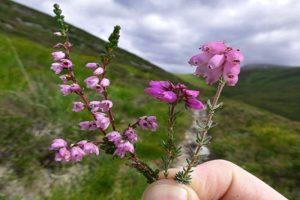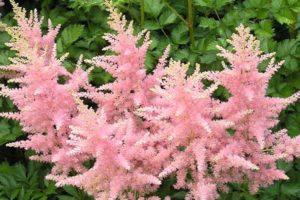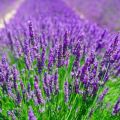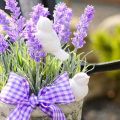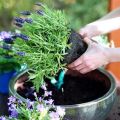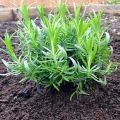Planting, growing and caring for lavender outdoors in the Urals
A plant with a beautiful name and a mysterious aroma is even sung in a famous song. Not by chance. After all, blue flowers are a symbol of love, tenderness, romantic meetings. Lavender will adorn any garden, its scent will bring back warm memories of youth. So that spring always blooms in your soul, you only need to plant a few bushes of blue flowers. Even a novice gardener can handle planting lavender outdoors in the Urals and caring for the plant.
Suitable varieties of lavender for the Urals
More than 25 types of natural lavender are known. How the crop is grown 2 main varieties:
- broadleaf French (thermophilic);
- narrow-leaved English (grows in cool conditions).
For the harsh climate of the Urals, species of English narrow-leaved lavender are suitable.
- A plant with bright green-silver leaves up to 60 cm high. The growth of some varieties does not exceed 15 cm.
- Small flowers with a purple tint. The beginning of flowering is July, but sometimes August also happens.
- Branches with white pubescence, which makes the entire bush look bluish.
When growing flowers in the climatic conditions of the Urals, no special effort is required, but the choice of a variety should be taken responsibly. The English narrow-leaved variety is the most suitable for the harsh Ural region. The plant winters well, tolerates low temperatures (-30 ° C), but it is advisable to shelter lavender in the Urals for the winter.
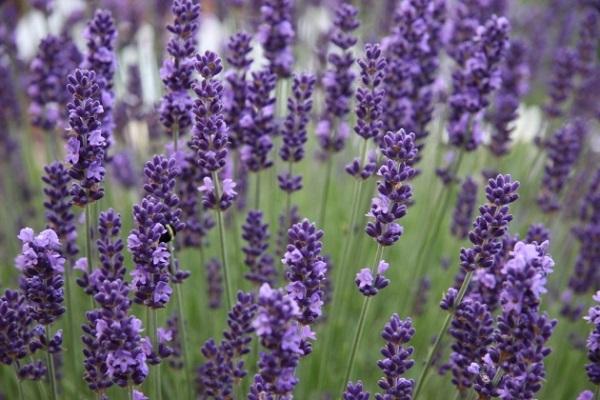
Alba
Popular among winter-hardy species of Alba. Half-meter bush with magnificent snow-white flowers and persistent fragrance. The fragrant flower has been pleasing to the eye for 20 years. A wonderful honey plant. Straight shoots with flowers in the upper part grow stiff over time.
Cornflowers, carnations, yarrow are plants with which lavender is planted, as well as with spicy herbs: thyme, rosemary, sage. It is useful to plant roses with lavender flowers, as the aphids cannot stand their smell.
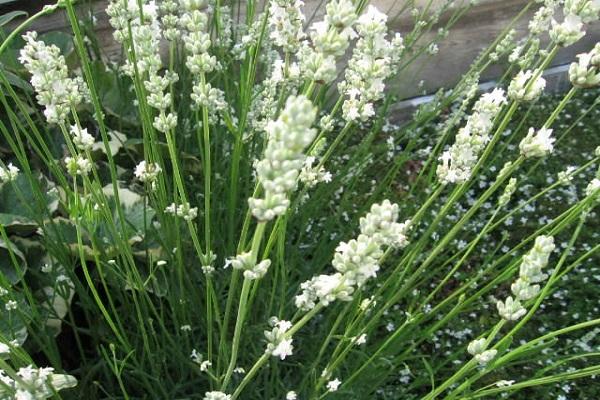
In addition to Alba, varieties are popular among gardeners of the Urals:
- Munstead. Plant up to 45 cm tall with bright blue flowers, tolerates strong winds well.
- Rosea. The flowers are pale pink. The variety is striking in its tenderness and beauty.
- Beechwood Blue. Blue inflorescences look attractive.
- Hidcote. Bright lilac flowers on undersized bushes. But among the plants of this species there are also tall ones, for example, Hidcote Giant.
These varieties are planted in the garden, but this does not mean that other, thermophilic types of lavender cannot be grown in the Urals. You can, but as a home culture or as an annual, when it's warm.
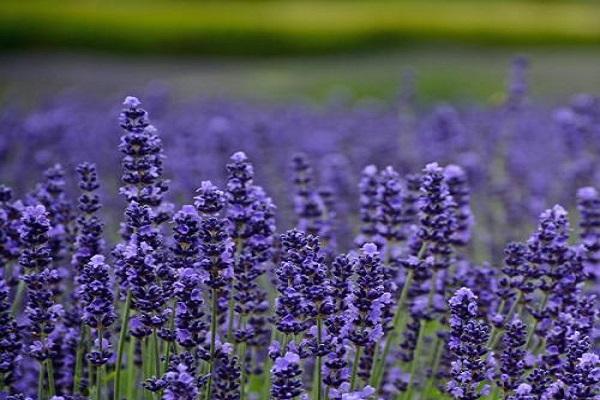
Features of growing a plant in this region
The Ural climate is not characterized by mildness and warmth: harsh, with cold long winters, prickly winds, and severe frosts. Although in the southern Urals the weather is slightly milder than in the northern. Viable plants can withstand such conditions. Therefore, a variety of English lavender with narrow leaves is more often planted in this area.
Choosing a landing site
To plant perennial lavender in the Urals, it is necessary to take into account the requirements for the place, since its choice is a guarantee of successful growth and luxurious flowering of the bush:
- Should be well lit and sunny.
- Where there are no drafts and no wind blowing.
- The place is chosen high, dry.

Soil selection
Lavender thrives on dry sandy soils. It is not necessary for the land to be fertile, the main condition in preparing the soil is the absence of groundwater and high humidity nearby.
If, nevertheless, the land is waterlogged, it is necessary to organize good drainage from rubble, expanded clay, pebbles. Also, the plant does not like acidic soil. The acidity is neutralized with ash or lime.
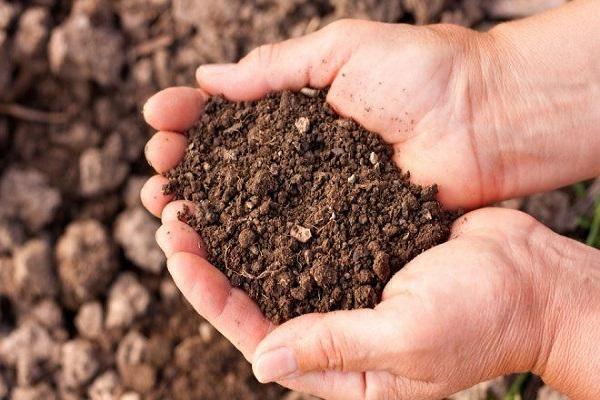
Planting process
The lavender bush is planted with both seeds and seedlings. Young seedlings are taken out into the street in the last month of spring (in May). When subzero temperatures on the soil are no longer scary:
- Dig holes no more than 35 cm deep. A layer of drainage is poured, then peat or humus.
- A seedling is placed in the hole, the roots are straightened, and buried. The soil is compacted.
- After planting, the plants are watered.
The interval between the planting pits is not less than 40 cm. Lavender is planted with seeds both in autumn and spring.
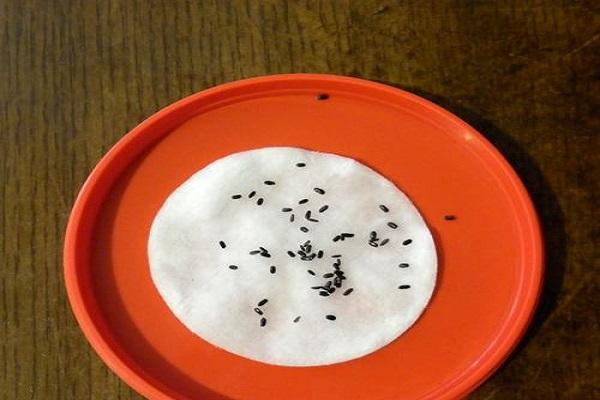
Before winter
In late September or early October in the Urals, lavender seeds are planted in open ground. First, the site is dug up with coarse river sand or fine gravel for better air exchange. The seeds are deepened by no more than 4 mm. The soil is slightly tamped from above. In dry weather, the area with crops is watered, but not much.
To avoid freezing of seeds in winter, more snow is poured onto the planting site... In early June, the first shoots should appear.
In the spring
If for some reason it was not possible to plant in the fall, do not despair. Before spring sowing seeds in open ground, they are hardened, that is, they are stratified.
To do this, in mid-March, the seed is mixed with sand and sent to the refrigerator:
- When it is warm outside, the night frosts pass, the seeds are sown in the ground.
- Care must be taken that the earth does not dry out, this will lead to the death of young shoots.
- First, the area with crops is protected with a covering material (spunbond, agrotex), with the moisture-proof side facing up.
- Seedlings emerge in 21 days. When they get a little stronger, the covering material is removed.
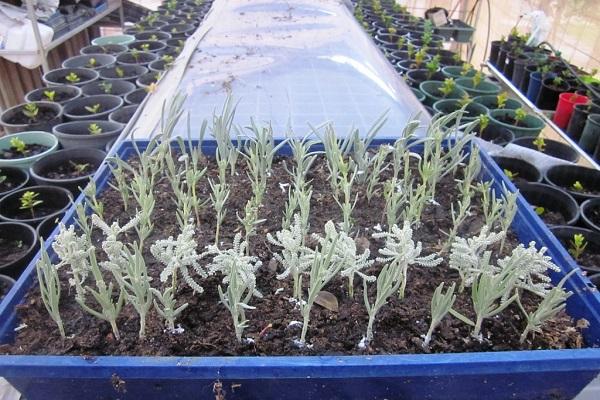
Nuances of plant care in the Urals
There are no peculiarities in caring for the Ural lavender. A properly chosen planting site, prepared soil is a guarantee of healthy, beautiful flowers with lush flowering. The care is standard.
Watering and feeding
Drought lavender is less dangerous than waterlogging. Water the dry soil (no more than 5 liters per bush) once every 15 days. When the plant has faded, watering is completely stopped.
The bushes are fed with mineral fertilizers. Organic (peat, manure, humus) are introduced at planting. For the first time, seedlings are fed with urea (1 tbsp. L. Per bucket of water). The second dressing is carried out when lavender blooms, for example, "Agricola".
A wide range of products for feeding lavender in specialized stores. How to use them is indicated on the package.
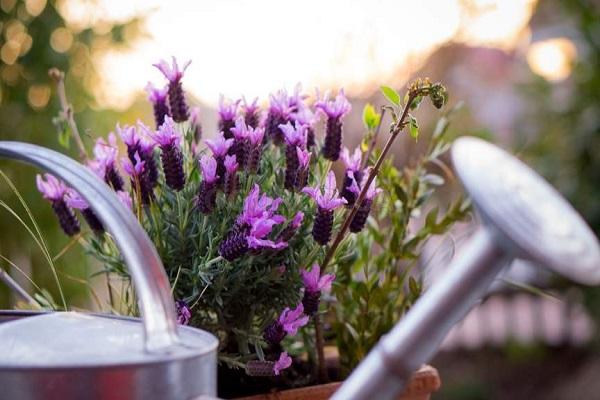
Pruning and preparing for winter
In the Ural climate, spring pruning of lavender is carried out:
- First, dried branches are removed, then diseased, damaged ones.
- On each bush, no more than 6 regrown shoots are left.
In the fall, the plant is not disturbed by pruning so that it has time to prepare for wintering. Due to spring pruning, the bushes rejuvenate, look neat, and bloom magnificently. To avoid freezing in winter, caring gardeners do not do without sheltering the plants. The plantings are covered with agrofibre, burlap, any non-woven material, even spruce branches.
In no case should lavender be covered with compost or fallen leaves. They overmoisten the soil, the plant will rot and rot... One of the measures to prevent freezing in the Urals is growing in pots and flowerpots, which, with the onset of cold weather, are brought into the room, leave the plant alone, and occasionally watered.
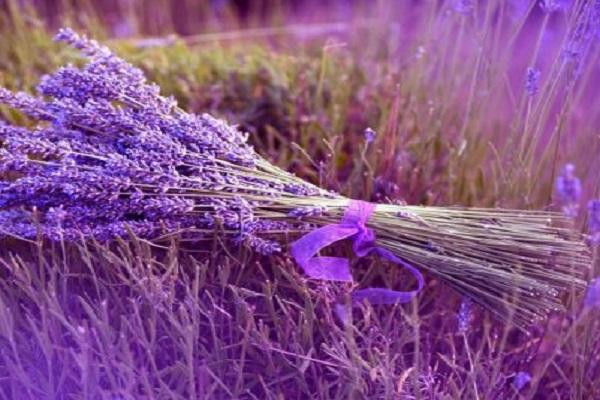
Diseases and pests
The most dangerous disease for lavender is gray rot. She starts up from waterlogging. This is why it is so important to regulate watering of the plants. The diseased flowers will have to be destroyed, and the remaining ones will have to be treated with fungicidal agents.
Insects that can harm lavender bushes: rainbow beetle, aphids, pennies. The beetle eats foliage, it is often picked by hand. Due to the penny, the plant is covered with white foam. In this case, the bush is washed with warm water. For insect pests, the plant is sprayed with such a product as Actellik. The strong scent of the lavender bush repels harmful insects, which many of the parasites cannot stand.
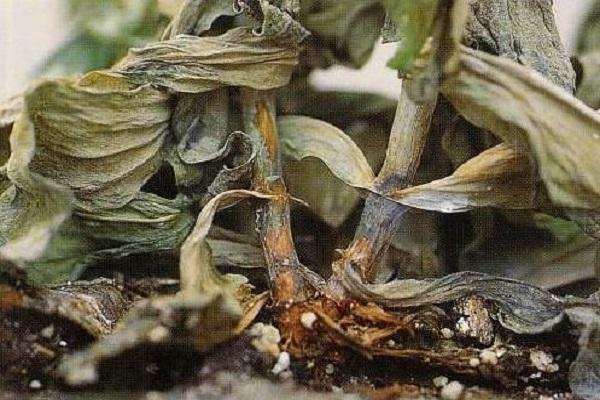
Shrub propagation
Lavender is bred using cuttings, layering, seeds, dividing bushes.
Seeds
In the Urals, reproduction by seeds is the best option. Seed material is protected in a place where it is dark and cool. Seeds remain viable for a long time. The main condition is the tightness of the package.
Before sowing, the seeds are hardened, that is, they prepare the future plant for cold weather, strong winds. Already at this stage of cultivation, lavender is prepared for the harsh climate. As gardeners of the Urals note, flowers grown from seeds are more viable than those planted with seedlings.
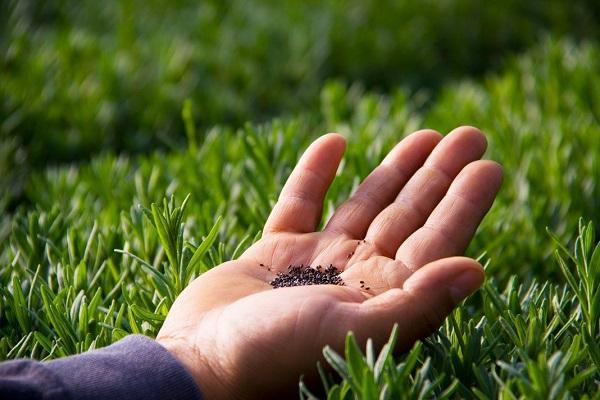
Cuttings
In this way, the bush is propagated at any time:
- In an adult plant, a woody shoot is cut off - a cutting. He is planted in a pot of earth.
- The bowl is covered with polyethylene, which is removed every day and the plant is aired.
- The soil is sprayed with water as it dries.
After 50-60 days, the cutting will take root and begin to grow foliage.
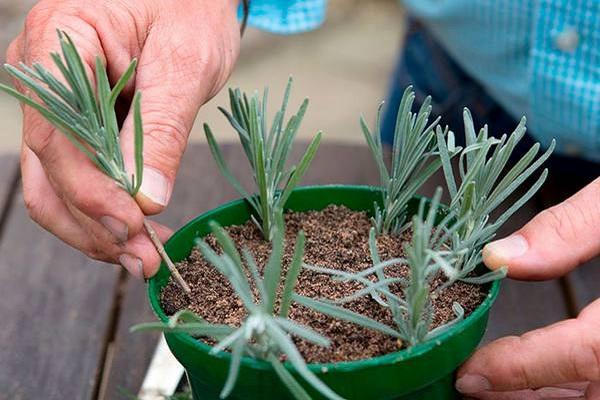
Layers
An adult shoot is bent to the ground, fastened with a metal bracket, and sprinkled with earth in this place. Where the shoot was attached, the next spring it will take root. It is cut off and planted in the right place.
By dividing the bush
The breeding method is possible where lavender bushes are already growing. In the summer, it grows overgrown with young shoots. First, fresh shoots are cut off by at least 10 cm. They are covered with earth so that there is no free space between the stems. In the middle of autumn, the bushes are dug up and separated with a shovel. They are planted where required.
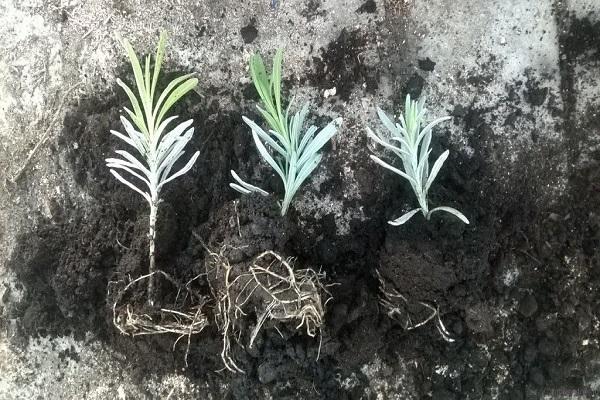
Use in landscape design
A riot of colors of blooming lavender will adorn even the most unattractive summer cottage. Alpine hills, rocky gardens are the places where lavender is more often planted. Lawns planted with blue flowers look well-groomed and luxurious.
Flowerbeds, vases with lavender, paths in the garden, along which various shades of purple flowers, look gorgeous. The lavender bushes are also great.
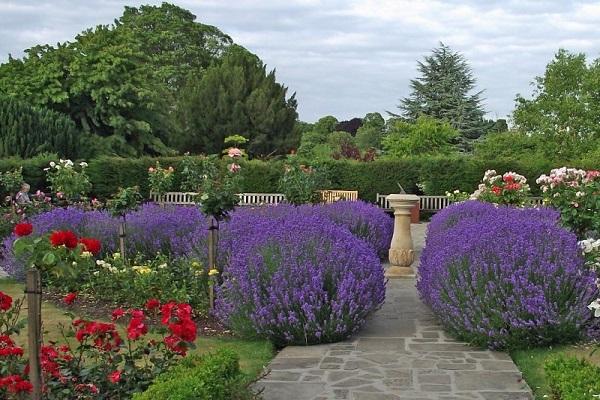
Lavender flowers look no less elegant in combination with other plants, for example, with roses, hydrangeas. In addition to beauty, lavender protects neighbors from insidious insects with its fragrance.
The contrast of lilac colors with white, red, yellow flowers gives the site an elegant, festive look. Planting and growing lavender in the Urals is no more difficult than in another region.
